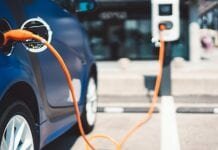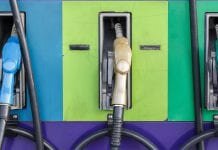
To electrify Europe, stakeholders are collaborating across industries to create a whole new world of smart cities. However, turning analogue metropolises into clean, energy-efficient digital hubs is about more than just smart kettles and other fancy gadgets. The decarbonisation of heat is also essential. Jacob Klimstra, senior energy consultant and member of the advisory board for Electrify Europe, looks at the barriers to its adoption and the need for greater collaboration.
In the quest for greener energy supplies and decarbonisation, heating is a major focus. It is widely understood that it is necessary to eliminate or at least reduce the need for gas and oil to heat buildings. Solutions for the decarbonisation of heat need to deliver greater efficiencies as well as the flexibility to balance the intermittency of renewable energy sources. In case district heating with “waste” heat is not an option, there really is only one viable alternative and that is electricity.
Of course, political drivers play a large role. Compliance with the Paris Agreement for reducing greenhouse gases dictates the reduction of fossil fuels, including natural gas and oil for home heating. Also, Britain’s North Sea gas supply is on the wane, while the Netherlands and other EU countries face declining reserves. Increasingly, countries are importing from the likes of Algeria, the Middle East and Russia but efforts are increasing to lower dependency on those sources.
Then there is the legal imperative. In the Netherlands, the Government is phasing out gas supplies to domestic properties. Similarly, in Germany there is the multi-billion-euro project to convert 30 per cent of gas customers from less calorific to highly calorific gas by 2030. Also, Denmark recently announced funding for several large heat pump projects.
Identifying efficiencies
Part of the solution will inevitably be decreased usage. As new homes get better insulation and the likes of induction cooking and devices that use heat from solar radiation increase, overall gas consumption could be so low that it is no longer necessary or economic to have a gas connection.
However, that is only part of the picture. In addition, electric heat pumps combined with hot water storage used to enhance flexibility have emerged as a particularly promising approach. But for the technology to succeed, the industry needs to factor in the commercial considerations.
One of the criticisms aimed at heat pumps is that they are more expensive to install than a simple gas boiler. However, the industry is still going through a learning process. As usage increases along with production volumes, installation will become more streamlined and architects will identify more optimum locations. Condensing boilers used to be expensive but today they are very affordable – and the same will happen with heat pumps. Reducing costs is a very real possibility.
Perhaps even more important are the long-term efficiency gains. Pure electric heating will typically convert one kilowatt-hour (kWh) of electricity into one kWh of heat. However, a heat pump could turn this into three, four or even five kWh.
When compared with hydrogen, one of the other solutions under consideration, the benefits become even clearer. Typically, a hydrogen solution for energy storage would turn 1 kWh of input back into perhaps only a third of a kWh of electricity when used in a generator. Were the hydrogen used for heating purposes in a boiler, a 1 kWh input of renewable electricity would yield only 0.6 kWh of heat. Clearly, the preferred route to heat from electricity is via an electric heat pump.
Navigating the hurdles
Despite the benefits and the many drivers, the process of electrifying heat across Europe will be slow – and could take another two decades. One obstacle is the need to adapt existing homes. It is easy to provide new homes with low temperature heating and the latest technology – but to convert older properties is more complex. If they have just installed a new boiler, it might be necessary to wait ten years for that boiler to expire.
Another factor is the capacity of the electricity grid. Distribution grids will have to expand dramatically to cope with greater demand. The likes of electric vehicles, cooking, smart devices and now electric heat pumps are all on the rise and will create greater demand for supply. For the networks, that is going to mean more digging and strengthening of their infrastructures. Greater digitalisation will also be crucial. With intelligent switching, networks could avoid some of the extensions to their infrastructure through more efficient balancing and storage.
Utilising waste heat
An often-overlooked consideration is waste heat. This could prove a valuable and perhaps essential ingredient in the overall decarbonising solution. Often, waste heat from incinerators in hospitals, data centres and factories, for example, is spoiled but really it should be reused wherever possible. It is unlikely that Europe will fully operate without fossil fuel in the medium term – and certainly not in the next decade. Therefore, this waste heat becomes a vital commodity.
Denmark and Germany have already made notable moves to utilise waste heat combined with district heating in their major cities. They are creating backup systems with heat pumps and co-generation units based on natural gas, which can also run on bio gas. In the European landscape of tomorrow, it might be that not every home needs its own heat pump, because there is so much waste heat that could be put to good use instead.
Promoting collaboration
Turning plans into reality, however, is not easy. The real problem is that there is a lack of co-ordination across sectors and between political and technical stakeholders. There is a clear political motivation for decarbonisation of heat and other sectors, and a positive will to make it happen. However, for the transition to work, there needs to be a clear roadmap for change that considers the many engineering factors.
At the higher levels of decision making, there seems to be a lack of this technical knowledge. As a result, the networks have largely been left to resolve the finer details of the implementation issues among themselves.
Greater competition within energy has been a big theme in recent years. However, perhaps in this case, competition needs to be set aside. Instead, countries must promote greater collaboration and integrated efforts based on insight into the entire system. Without this united approach, the end result could be fragmented and isolated projects that don’t work as a cohesive and effective whole.
Different stakeholders have different interests. There are those lobbying for hydrogen, for example, while others are investing in heat pumps. It will be up to the governments to take the lead to ensure a fair and, most importantly, successful implementation when it comes to the decarbonisation of heat. However, they need to do this from a place of knowledge and so it will be vital to enlist the advice, support and guidance of experts such as universities or technical institutes.
Electrify Europe is one event to facilitate and promote this industry-wide collaboration and education. It brings together stakeholders from across the energy sector to discuss and help shape future policy. Platforms such as this can help the decarbonisation of heat in Europe move from political ideal to real world success.
And it must. Because humanity faces no challenge greater than decarbonisation. And there is no way to overcome it without taking the decarbonisation of heat into account.


















